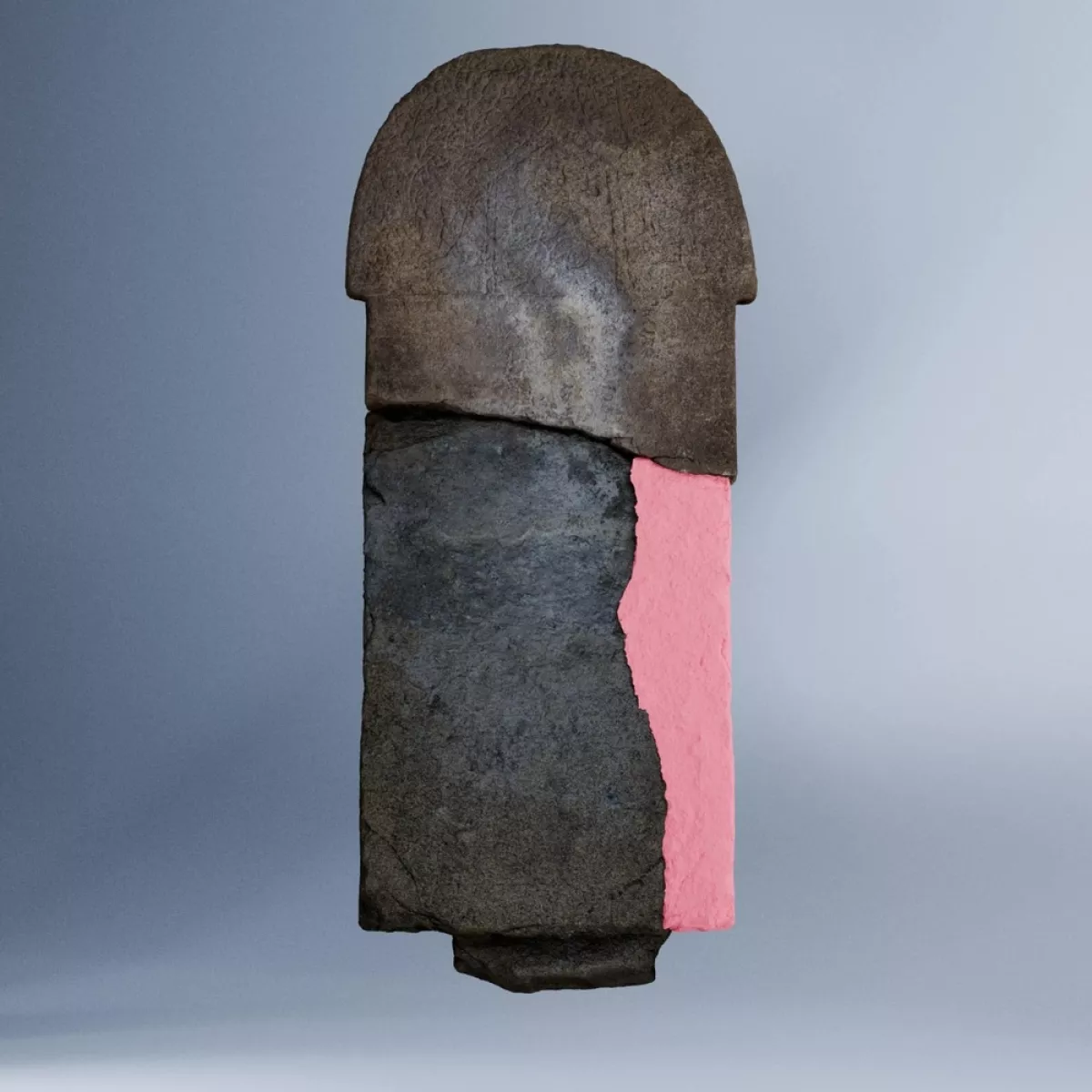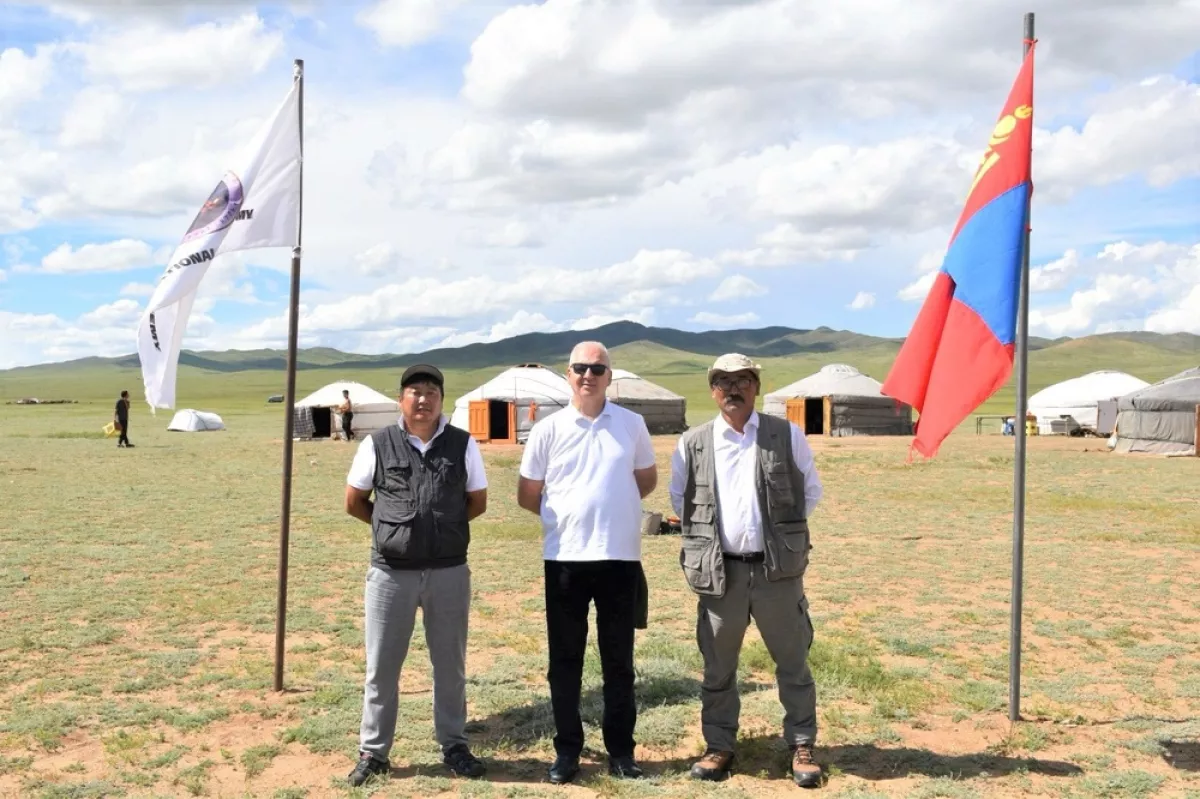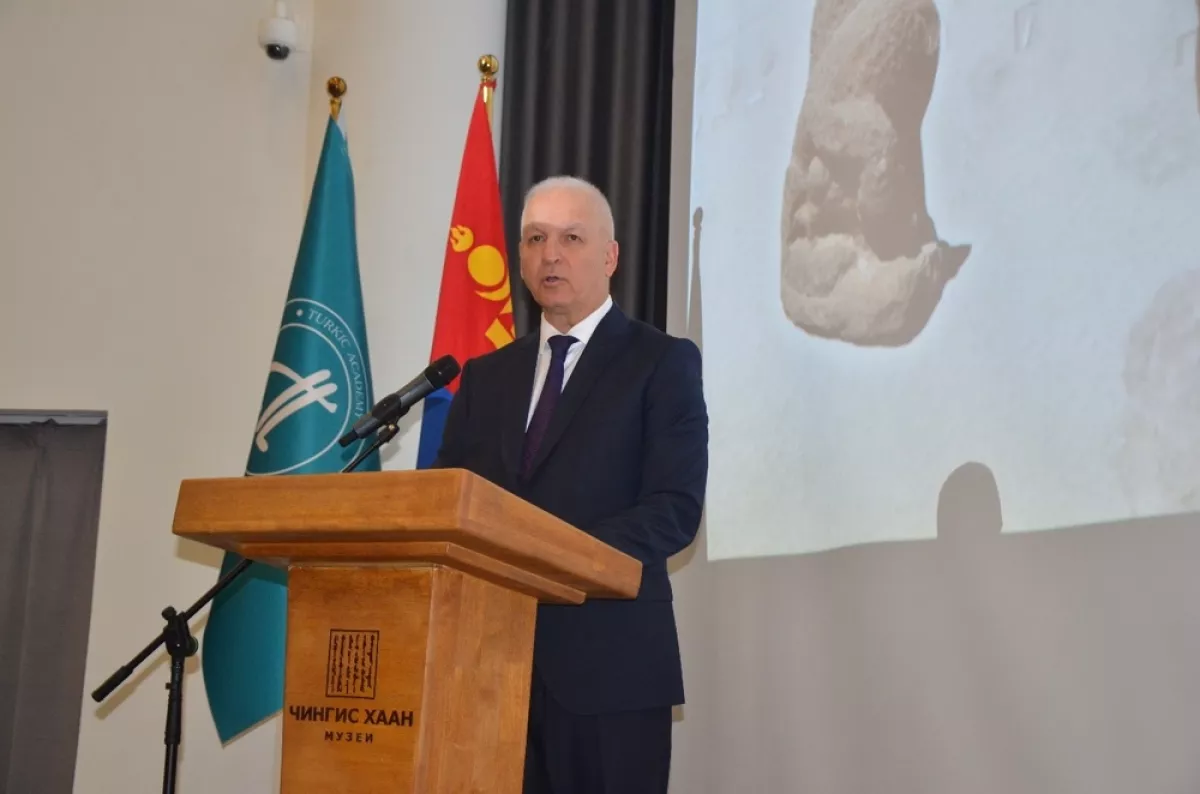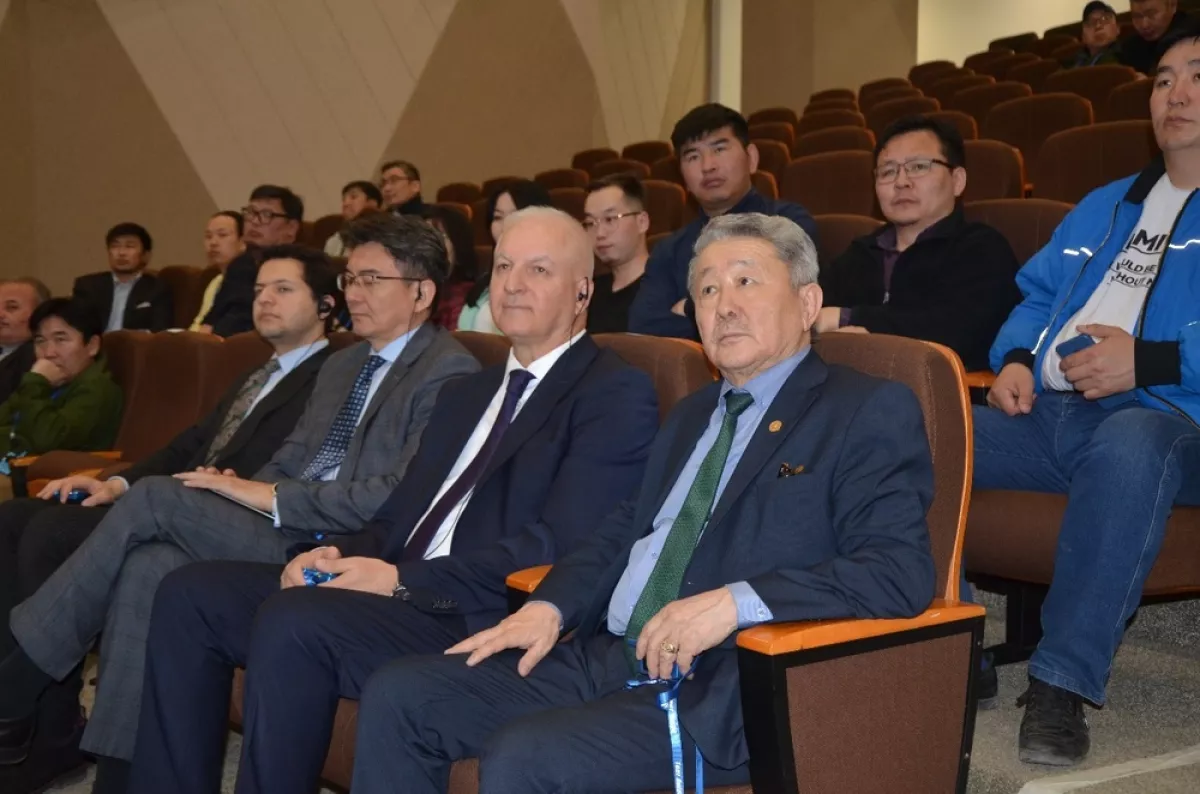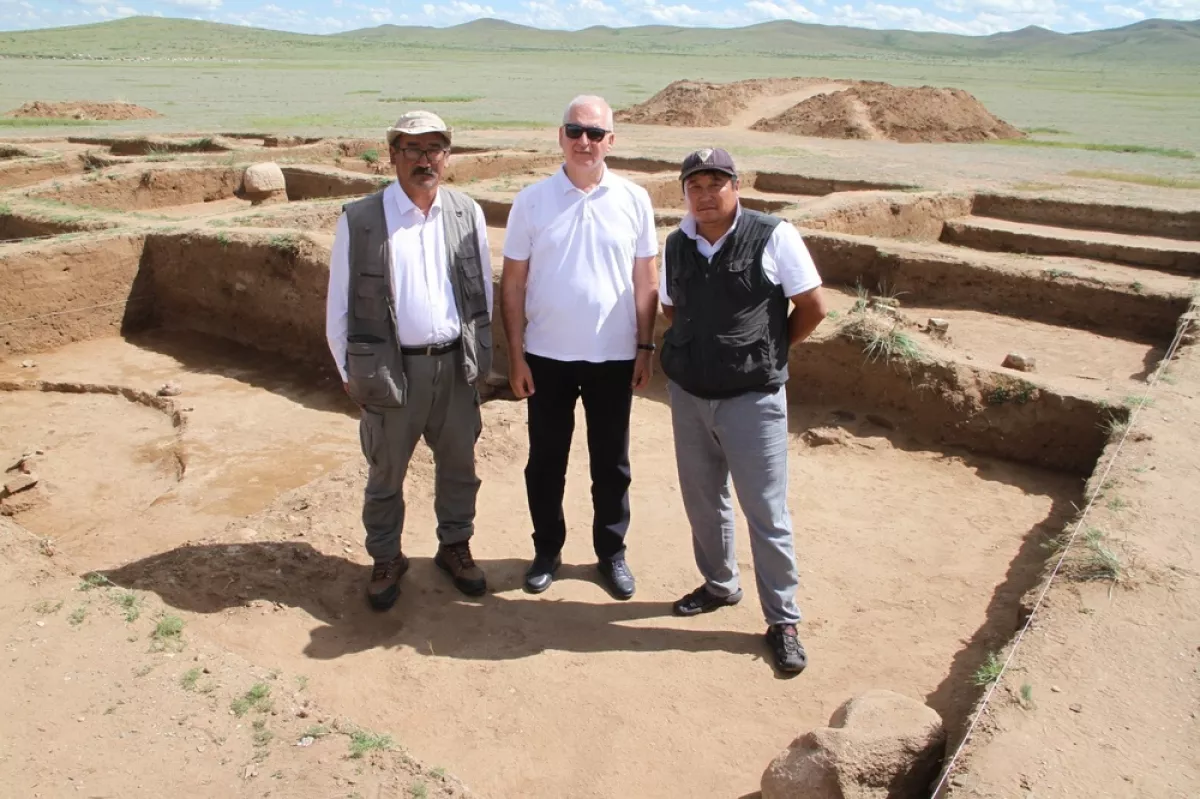Ancient monument in Mongolia unveils new insights into Turkic Khaganate history Secrets behind the inscriptions / PHOTO
An interesting discovery shedding light on the history of the Turkic Khaganate has been unveiled through inscriptions on an ancient Turkic written monument in Mongolia.
The International Turkic Academy shared the discovery on its website, Caliber.Az reports.
Since 2019, the Turkic Academy, in collaboration with the Institute of Archaeology of the Mongolian Academy of Sciences, has been conducting archaeological excavations in the Nomgon Valley, located in Mongolia's Arkhangai region.
In 2022, during an expedition at the Nomgon-2 site, archaeologists unearthed the upper portion of a stone stele inscribed with ancient Turkic and Sogdian scripts. The inscriptions include 12 lines of Turkic text, reading “Kutlug Khagan Turk … Tengri oglu …,” and six lines of Sogdian text mentioning “Kutlug Khagan.” Researchers identified the site as a kagan’s memorial complex, likely linked to Elterish Kutlug Khagan (682–692), founder of the Second Turkic Khaganate.
Further excavations in 2023 uncovered the lower part of the stele, revealing additional inscriptions. Although the Turkic text on this section is heavily damaged, partially preserved Chinese characters on the reverse side offered new insights. Experts from Inner Mongolia University—Professor Borjigitai Muren, Dr. Chui Ning, and Dr. Sugar—played a pivotal role in deciphering the Chinese inscriptions.
By January 2025, researchers had partially decoded lines 3 to 8 of the Chinese text, identifying terms such as “Turk” and the title “Kutlug” (transcribed as “Gu-du-lu”), confirming its association with the Second Turkic Khaganate. The text consists of 15 lines, each with approximately 24 characters, totaling around 300 characters.
The ancient monument was officially presented in Ulaanbaatar in 2024, marking a major milestone in the joint efforts of the Turkic Academy and the Mongolian Institute of Archaeology.
This discovery underscores the importance of the Nomgon-2 complex in the study of Turkic history and provides new evidence of the reign of Elterish Kutlug Khagan. Collaborative research in the Nomgon Valley is set to continue, promising further breakthroughs in understanding the ancient Turkic period.
By Khagan Isayev




